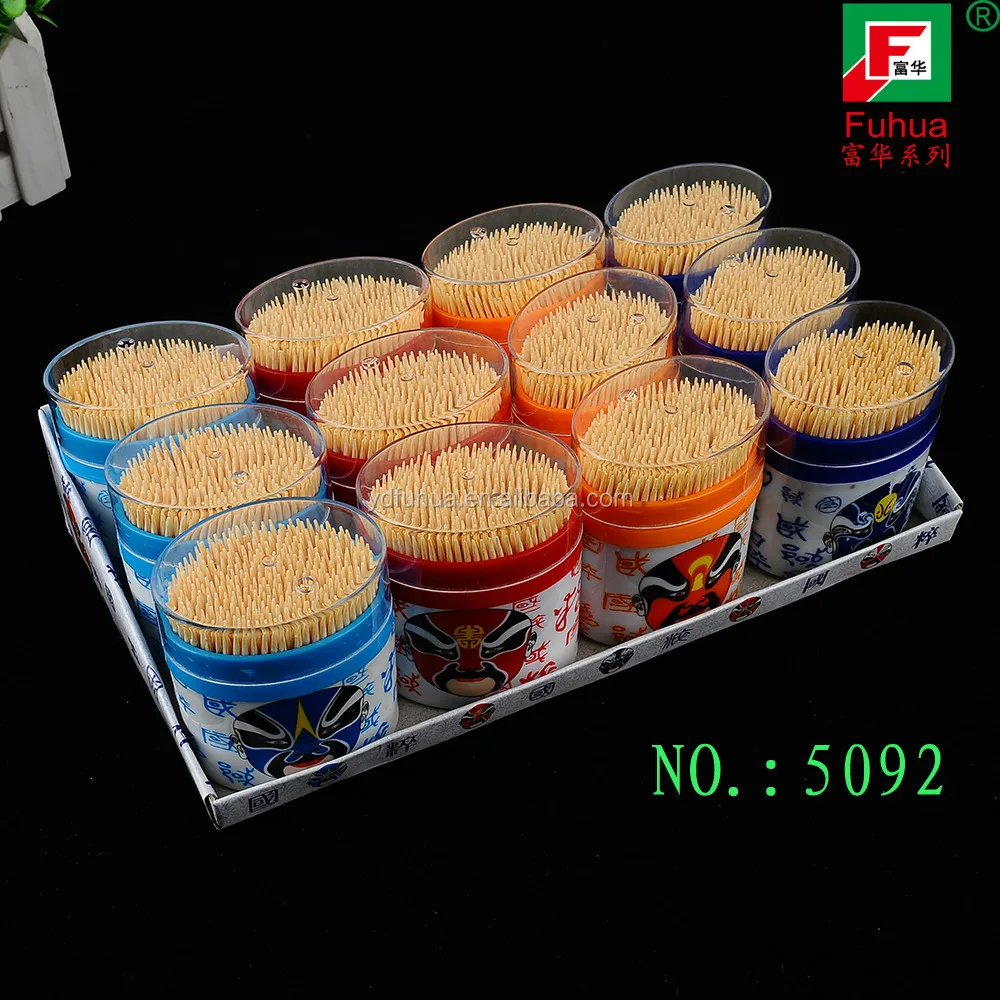The manufacturing process of the Toothpick The log stage
The
process of making a toothpick usually begins with birch logs. The logs
are lifted by grippers into a de-barker, which is made make a smooth,
barkless cylinder.
The log is then transported into a unraveling machine and strips the log like paper
At the end of the log stage the toothpick is left as a billet and carried to the puncher. The puncher cutter that makes identical toothpick strips. The puncher can cut toothpicks at a rate of 8,000 toothpicks per second.
The billet stage The finishing stage
These soft toothpicks are hardened in a dryer for 12 hours and then polished using talcum powder and friction for another four hours.
The hardened toothpicks then pass through a sifter that removes damaged toothpicks. The acceptable toothpicks are sorted into a blower and conveyor that counts and packages them at the rate of 747,500 per hour. A toothpick is a small stick of
wood, plastic or bamboo that can
be used to remove detritus from
the teeth usually used after a meal.
They can also be used
for picking up small appetizers
(like cheese cubes or olives)
or as a cocktail stick.
The toothpick might not be a big deal
or the most important thing out there, but
we have all used it in our life time and it
has come to be a big help in small moments
of life.
The Toothpick over time
The log is then transported into a unraveling machine and strips the log like paper
At the end of the log stage the toothpick is left as a billet and carried to the puncher. The puncher cutter that makes identical toothpick strips. The puncher can cut toothpicks at a rate of 8,000 toothpicks per second.
The billet stage The finishing stage
These soft toothpicks are hardened in a dryer for 12 hours and then polished using talcum powder and friction for another four hours.
The hardened toothpicks then pass through a sifter that removes damaged toothpicks. The acceptable toothpicks are sorted into a blower and conveyor that counts and packages them at the rate of 747,500 per hour. A toothpick is a small stick of
wood, plastic or bamboo that can
be used to remove detritus from
the teeth usually used after a meal.
They can also be used
for picking up small appetizers
(like cheese cubes or olives)
or as a cocktail stick.
The toothpick might not be a big deal
or the most important thing out there, but
we have all used it in our life time and it
has come to be a big help in small moments
of life.
The Toothpick over time
How Toothpicks Are Made 2
Weed Woman asks:Here’s a question my husband and I have pondered for years, How do they make toothpicks? The nice round ones? They are too small for a lathe. The idea of whittling gnomes has been batted around but seems improbable. Help Dr. Science!Well, this isn’t really science, but hey, if I can find references telling me how about the detailed chemistry of how a shark smells, I cna find this too. Anyway, here ya go:
Toothpicks begin life a birch tree. eventually, the birch tree ends up on a loggers truck, and finds its way to a toothpick factory (surprisingly, they are almost all in Maine). Once there, the tree is cut into thin sheets of wood called veneer. This is done one of two wats: in the first method a giant saw is used to cut a thin slice of the log. This is wasterful because the saw turns a lot fo the wood into sawdust. The more efficient method is to slice a thin sheet off the log with a Realy Sharp Knife. This is done by mounting the log in a machine that turns is on its axis. A very Long, Sharp knife is pressed against the side of the log, and as the log turns, a thin sheet is sliced off.
The Very Thin Sheet of wood is then steamed. This makes it soft and easy to cut. Flat toothpicks are just stamped out of the wood, dried, boxed and sent on the consumer. Round toothpicks are stamped out of the (slightly thicker) sheet, then passed through a machine called a “rounder”, which grinds them into the nice round, double tapered sticker we all know and love.
Ain’t technology great! Imagine that someone actually invented these machines just to make toothpicks! Pretty cool, eh?


![New Music Jez -Cover Me Produce By Itszamsflowbeat [O'Town Entertainment]](https://blogger.googleusercontent.com/img/b/R29vZ2xl/AVvXsEhIzVDxln_YNe4bDNkvnX4vbF66JB-DwinRnGS9Fy_bthllKmbaw0nubpM2mdePklRzeEOeFZ5esEjjmjaCvheRtlkkhZziGQk9n1ZE4GJ9qmewgTTwbhjqTgWv7i1IDN4aaOj4nAMjLvwU/s1600/IMG-20170628-WA0022.jpg)











Post a Comment